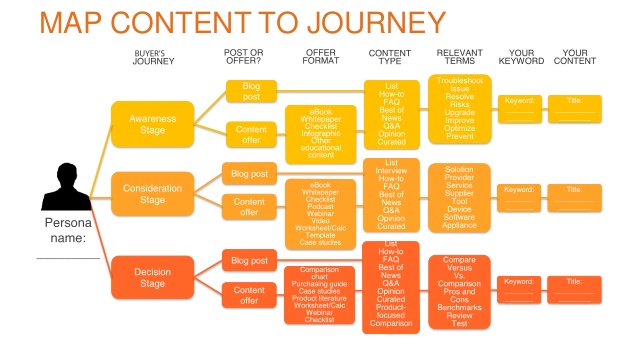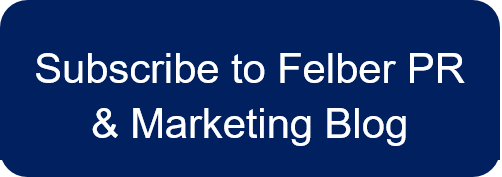Why Manufacturers Need a Content Map for Inbound Marketing Success
 You’ve heard it before: content is king—and the way to create relevant, consistent content is by creating a content map. Content marketing is not a short-term campaign. Just like the manufacturing sales cycle, it is a long-term strategy to attract, convert, close and retain customers. Below, learn my best practices for creating a content map for inbound marketing success.
You’ve heard it before: content is king—and the way to create relevant, consistent content is by creating a content map. Content marketing is not a short-term campaign. Just like the manufacturing sales cycle, it is a long-term strategy to attract, convert, close and retain customers. Below, learn my best practices for creating a content map for inbound marketing success.
What is a Content Map?
A content map is a cross section outline detailing your approach to your buyer personas (prospects and customers). Your map details not only the type of content such as a blog post, infographic or video but the schedule and nature of how you are sending the content. Your messages are always developed with the inbound marketing methodology and your target buyer personas in mind. Furthermore, you must consider their stage in the buyer’s journey (awareness, consideration, decision). The goal is to target content according to the characteristics of the person consuming your content (that’s why buyer persona research is so crucial) and how close that person is to making a decision to buy your product or service (lifecycle).
Content Map Essentials
A content map is so much more than a calendar with content assigned to specific dates. An effective content map is tailored to the buyer personas (who you want to sell to), their specific engagement level (how often their opening, clicking or engaging with your brand/content), and the channels used to reach those targeted personas. Content map essentials include:
- A list of what you are publishing based upon your content strategy. This should include if the content is repurposed or needs to be written. Also, keep in mind industry trends, new product lines, or other factors that should influence when you post certain content.
- Names of individuals creating the content.
- The channel(s) for the content.It is essential to map out where you are sharing your content. For example, if you are creating an eBook, list the blog content, social content, and email blasts to promote the eBook.
- Target Audience and Lifecycle Stage. It’s important to include the targeted “buyer persona” and “lifecycle stage”. Also include keywords which your target buyer persona will be searching during their specific lifecycle stage.
- Dates for completion and publishing. Indicating when it’s due for review and when it’s intended to be published is key to keep your employees accountable and ensure you create the content you intended.
- Long-tail Keywords. Long-tail keywords are essential to ensure that your content appears in search. Use tools such as HubSpot or Google Keyword Planner to find keywords that will attract your ideal prospects.
Content Map Organization
When organizing your content map, we suggest mapping 6 months to a year worth of content. Below is a suggested content map layout.
- Content type
- The buyer persona(s) targeted
- Lifecycle stage of buyer pesona(s) target
- Person/individuals responsible for creating the content
- Long-tail keywords to include in the content
- Channels to publish the content (social, blog, YouTube, etc.)
- Due Date
- Publish Date
- Column for Status (yellow for in process, green for completed)
- Call-to-Action on the content
- Separate tab on the content map for content idea brainstorming
With these simple tips, you’ll be on the right track to content marketing success. Struggling to think of content ideas? Check out our blog 10 Ways to Reignite Your Manufacturing Blog for some content ideas that your manufacturing prospects and customers will love.


Leave a Reply
Want to join the discussion?Feel free to contribute!